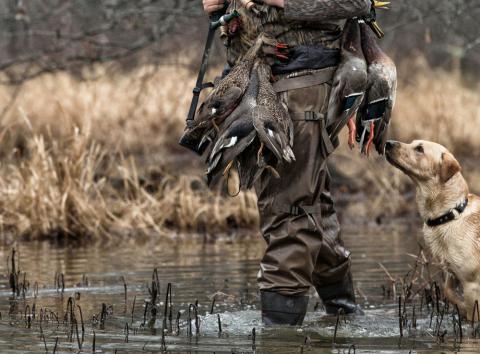Bob Humphrey | Originally published in GameKeepers: Farming for Wildlife Magazine. To subscribe, click here.
The buck first showed up on October 3rd and provided a very pleasant and unexpected surprise considering we’d been running trail cameras since late August. My enthusiasm was tempered however by the time stamp on the image: 12:31 AM. The buck we named “Tall Boy” showed up again four days later and an hour earlier, and then vanished for a month…and the rest of bow season.
The next time he posed was an hour before daylight. That really got us going as the gun season was open and the rut kicking in. But we never laid eyes on him and despite running a half dozen cameras strategically over a square mile or so, we didn’t capture another image of him for three weeks. The next picture was taken ¾ of a mile away and again in the dark. Then Tall Boy went underground and didn’t surface again until after the December muzzleloader season. At least he’d made it through hunting season, but clearly more work needed to be done if we were going to sort out this buck’s home range and movement patterns before the next season.
We’d all like to know a lot more about where, when and how deer move about their regular haunts, but we can’t all go out and conduct a full-blown research project involving satellite telemetry and GPS collars. What we can do; however, is use general trends uncovered by that type of research, combined with what little we can glean from game cameras and personal observation and apply it to our own hunting grounds. Along the way, we might even learn a little bit about how to improve the odds of deer moving where we want them to by manipulating the habitat.
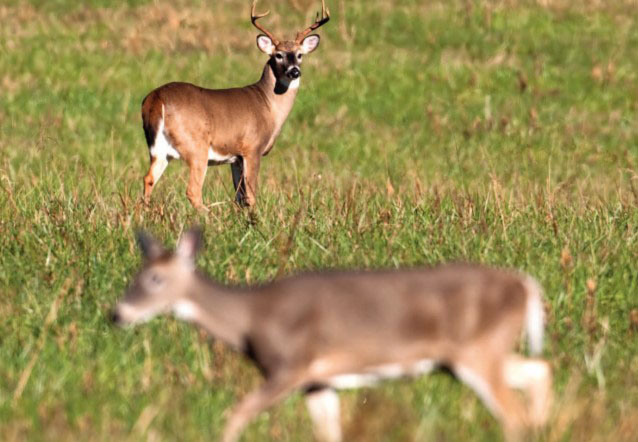
Definitions
In order to better understand home range movements we must first better understand what is meant by “home range.” In layman’s terms it is the area occupied by an individual throughout the year. Biologists prefer more accurate descriptions. One widely accepted definition, by W.H. Burt is: ‘‘That area traversed by an individual in its normal activities of food gathering, mating and caring for young.” That seems clear enough but Burt also added: “Occasional incursions outside the area, perhaps exploratory in nature, should not be considered part of the home range.” That part is somewhat debatable, especially when it comes to whitetails, as we’ll see.
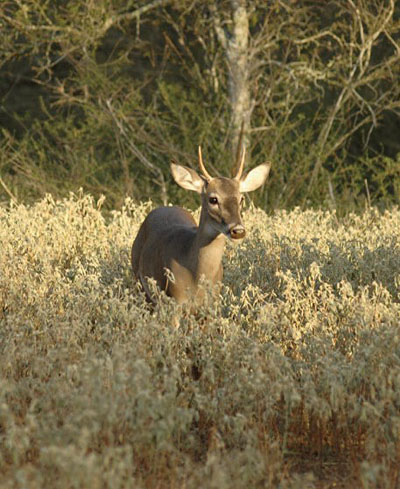
factor in yearling buck dispersal, but older bucks are far
less likely to change home ranges once they’re established.
Since the advent of radio, and now GPS satellite collars, deer biologists can now define home range as where an individual spends 95 percent of its time over the course of an entire year. This definition also excludes those erratic forays or excursions. They then further refine this to include a Core Area, where a deer spends 50 percent of its time - places like bedding and preferred feeding areas.
Folks sometimes use the term territory to describe where a deer lives but there’s a distinct difference between “home range” and “territory.” A home range is the area merely occupied by an individual. A territory is something that is defended. Whitetails are, in general, not territorial. There are exceptions. In spring, at or around the time a doe is about to give birth she will drive off other deer from the birthing territory. This is a very temporary arrangement and will only last until the fawn can get up and walk on its own, perhaps a day or two. In the fall, a buck that is paired up with a hot doe will drive off any potential rivals so in essence, he is defending whatever patch of ground that doe happens to be standing on at that precise moment. But otherwise, deer are not territorial.
Clarification
One of the most universally accepted tenets among deer hunters is that “a white-tailed deer has a home range of approximately one square mile.” That’s not necessarily true; and it’s easy to see why. The size of a whitetail’s home range is influenced by numerous factors that can vary considerably from one region or location to another to certain conditions or season to another, which we’ll address in a bit. However, if you were to compile all the data on whitetail home ranges throughout North America and calculate the average, it would probably come close to just over that one square mile. It’s important to remember that’s an average. The high end could be as much as ten to fifteen square miles where there is poorer quality habitat or low deer density, or in the “big woods” of some of the northern tier states or some states west of the Mississippi where they may have to travel long distances to meet their needs. Or it may be less than a square mile in rich agricultural land or densely developed areas.
Movement Variables
The principal factor influencing how much, how far and where within its home range a deer moves is habitat, which consists of food, cover and water. The greater the quantity and quality of those habitat variables, the less a deer will have to move to find them. The lesson here for the land manager should be obvious. Increase the quality and lessen the variability of your habitat and you’ll attract and hold more deer. And for the hunter, those deer will move more within their and your home range.
Of course there is a law of diminishing returns, especially with bucks. As anyone who has ever seen a bachelor group can attest, bucks are quite social during late summer. That changes in the fall as hormones begin to flow and aggressive interactions increase. And while several studies suggest this may be a reason yearling bucks relocate their home range, one recent study found that not to be the case with older deer.
A South Carolina study found core areas of four adult bucks overlapped somewhat, three to a great degree. And this was during the hunting season when they should have been potential rivals. It’s likely that while they were in the same general locale they may not have been in the same immediate vicinity of each other, at least not at the same time. Like rival siblings, they didn’t move out of the house, they just moved to different rooms. Still, it shows that even intraspecific aggression will not prompt adult bucks to abandon their home range, or core areas.
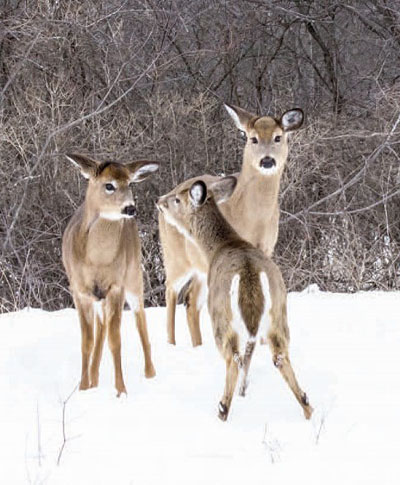
you can learn about your own herd in their own habitat, you
may be able to gain greater insight into local deer
movements.
Much the same is true for hunting pressure. Several studies have found that rather than move out, mature bucks simply moved less during daylight, and more in thick cover in response to increased human (hunter) presence. That’s another important thing to know. You may not drive your hit list bucks off the property, but you will make them harder to kill if you pressure them too much.
The Dating Game
Eventually bucks will have to move if they want to find a mate, and biologists have identified three different strategies they use to do so. When we think of buck movement during the rut, most hunters probably picture nomadic deer that travel far and wide, (perhaps as much as five miles or more from their core area) for an extended period of several days. This is not an uncommon scenario particularly, but not necessarily, when does are fewer and farther between. And both our definitions exclude these forays from the home range.
Some bucks make periodic excursions, traveling well outside their core areas and home ranges, but typically returning within 12-24 hours. Even more interesting, one study found that many of these bucks have two or more focal points - between 60 and 140 acres in size - within their home ranges that they re-visit every two days or so. Perhaps of greater interest to the hunter, researchers also found the focal points of several individual bucks overlapped during peak rut, and speculated bucks might be spacing their visits to assess female receptiveness. This suggests the traditionally accepted model of bucks visiting doe groups might actually have some basis in fact and offers some justification for including these excursion sites in a buck’s home range.
Finally, some bucks are “home bodies.” They remain largely within their home range, spending a considerable amount of that time in core areas, even during peak rut. It should be noted that one study found some of these sedentary bucks had one core area while others had multiple cores. Perhaps does were in good supply, or it could simply have been individual personalities, which actually influences movements more than most realize.
That last part is a very important thing to keep in mind when it comes to deer behavior but particularly with older deer - like humans, they all have distinct personalities. Some are homebodies while others have a wanderlust. However, like college kids, they always eventually return home.
Seasonal Shifts
Another reason deer may shift home ranges and/or core areas is diet shifts. It’s been researched, discussed and written about ad nauseam so I won’t go into too much detail. Suffice to say, deer movements change when food availability or preference changes. Most gamekeeper-types already know that deer transition from predominantly proteins to increased carbohydrates and foods with higher fat content as summer changes to fall.
You need to understand what that means in the areas you hunt. Where I live, the deer are in the clover fields almost every night in August and early September but gradually shift away from the fields and into the woods where apples and acorns begin to drop as the days grow cooler and shorter.
Different foods ripen or become more available at different times. I witnessed this on a Kansas hunt where the deer had been regularly seen in the soybean fields until we arrived to hunt. Initially we thought it was our appearance and the associated disturbance. Then we realized ripe persimmons were dropping and deer were literally walking non-stop across bean fields to get them.
In the northeast, white oak acorns fall first, and often over a fairly short duration. The deer gobble the sweeter nuts up while they can in deference to the bitterer, but larger red oak acorns that will continue to drop over a more prolonged period and get more attention later. Midwestern and western hunters know how dramatically deer movement can change when the corn or alfalfa is cut. Every area is different and you need to figure out yours.
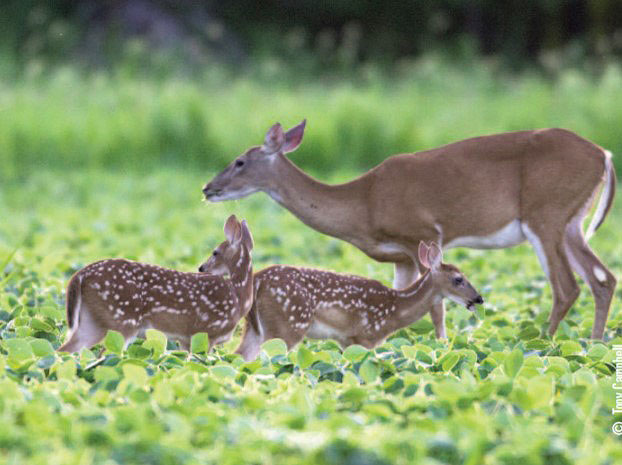
Shifting Seasons
Another thing that can influence home range movement is climate. Deer hunters living east of the Mississippi and south of the Mason-Dixon Line may not fully appreciate just how dramatic the changes can be. Those of us in the North Country or western mountains know the difference.
I occasionally hunt an area of northern Maine that lies along the Canadian border. While local folks hunt whenever the season is open, older hunters have learned to save their energy until the mercury drops and the snow accumulates. Just over the border lies a large traditional wintering area (see sidebar) and deer will migrate to it from as far as ten to twenty miles away once winter conditions set in. Much the same occurs in mountainous areas of western states where deer and elk move down into the valleys. In slightly milder climates it’s common to see deer move to and congregate in areas of dense bottomland softwood cover and/or south facing slopes. And it’s also important to manage for these important winter habitats if you’re in these areas.
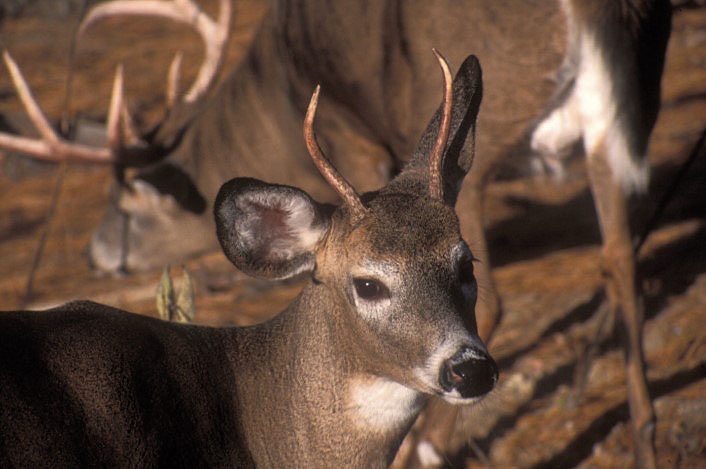
Conclusion
To recap, after about the age of two, a deer will spend most or all of the remainder of its life within a defined area called a home range. Most of that time will be spent within a smaller portion of that is called a core area. The most notable exception is when bucks leave core areas and sometimes home ranges in search of a mate — sometimes.
Otherwise, core areas may shift seasonally with changes in food availability or preference, but deer will still remain within their home range. And that home range can range from very small to very large depending on habitat quality, deer densities and other variables. In good habitat and a moderate climate it may be a relatively small area. In more severe climates a deer’s home range may consist of summer and winter core areas that could be as much as ten to twenty miles apart. All that information is helpful but deer are individuals. If you want to figure out the one at the top of your hit list, you’ve got to put in your time in the field.

















